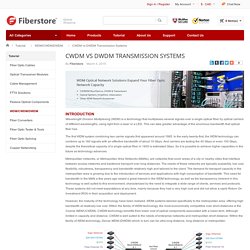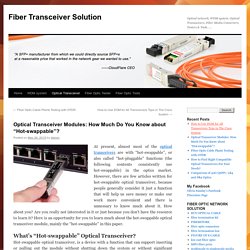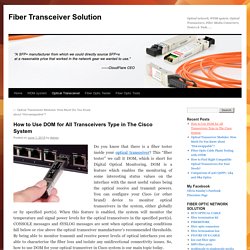

Fiberstore - Optical Network Solution, All in Fiberstore ! HP J4859C Specs. Fiber Optic Cable Plants Testing with OTDR. If you are a fiber optic cable (FOC) technician or plants installer, you may be very familiar with Optical Time Domain Reflectometer (OTDR).

OTDR testing creates a snapshot of a fiber optic cable. This test is commonly used to verify the quality of the installation and troubleshoot problems. OTDR testing requires interpretation of the data acquired, called the trace or signature, by a skilled operator. No matter you are a beginner or a workflow expert, you should master the basic operation skills and considerations of OTDR to ensure the accuracy and correctness of the test result. This paper is a basic guide of fiber optic cable plants testing with OTDR. Equipment Needed To Perform This Test OTDR with modules appropriate for the cable plant (e.g. multimode: 850 and/or 1300nm, singlemode, 1310, 1550 and/or 1625nm.)Launch and/or receive reference cables of the same fiber type and size as the cable plant and with connectors compatible to those on the cable plant.Notes: a.
Test Procedure. CWDM vs DWDM Transmission Systems : Fiberstore.com. INTRODUCTIONWavelength Division Multiplexing (WDM) is a technology that multiplexes several signals over a single optical fiber by optical carriers of different wavelengths, using light from a laser or a LED.

This can take greater advantage of the enormous bandwidth that optical fiber has. The first WDM system combining two carrier signals first appeared around 1985. In the early twenty-first, the WDM technology can combine up to 160 signals with an effective bandwidth of about 10 Gbps. And carriers are testing the 40 Gbps or even 100 Gbps, despite the theoretical capacity of a single optical fiber in 1600 is estimated Gbps.
So it is possible to achieve higher capacities in the future as technology advances. Metropolitan networks, or Metropolitan Area Networks (MANs), are networks that cover areas of a city or nearby cities that interface between access networks and backbone transport over long distances. However, the maturity of the technology have been realized. 1. As Topological 1. 2. Optical Transceiver Modules: How Much Do You Know about “Hot-swappable”? At present, almost most of the optical transceivers are with “hot-swappable”, or also called “hot-pluggable” functions (the following contents consistently use hot-swappable) in the optics market.

However, there are few articles written for hot-swappable optical transceiver, because people generally consider it just a function that will help us save money or make our work more convenient and there is unnessary to know much about it. How about you? Are you really not interested in it or just because you don’t have the resource to learn it? Here is an opportunity for you to learn much about the hot-swappable optical transceiver module, mainly the “hot-swappable” in this paper. What’s “Hot-swappable” Optical Transceiver? Hot-swappable optical transceiver, is a device with a function that can support inserting or pulling out the module without shutting down the system or without significant interruption to the system and significant interruption to the operation of the system.
How to Use DOM for All Transceivers Type in The Cisco System. Do you know that there is a fiber tester inside your optical transceiver?

This “fiber tester” we call it DOM, which is short for Digital Optical Monitoring. DOM is a feature which enables the monitoring of some interesting status values on the interface with the most useful values being the optical receive and transmit powers. You can configure your Cisco (or other brand) device to monitor optical transceivers in the system, either globally or by specified port(s). When this feature is enabled, the system will monitor the temperature and signal power levels for the optical transceivers in the specified port(s). CONSOLE messages and SYSLOG messages are sent when optical operating conditions fall below or rise above the optical transceiver manufacturer’s recommended thresholds.
What Parameters are Monitored by DOM? DOM allows to monitor some parameters so that network administrators can then check and ensure that the module is functioning correctly. How to Use DOM Restrictions Procedure.